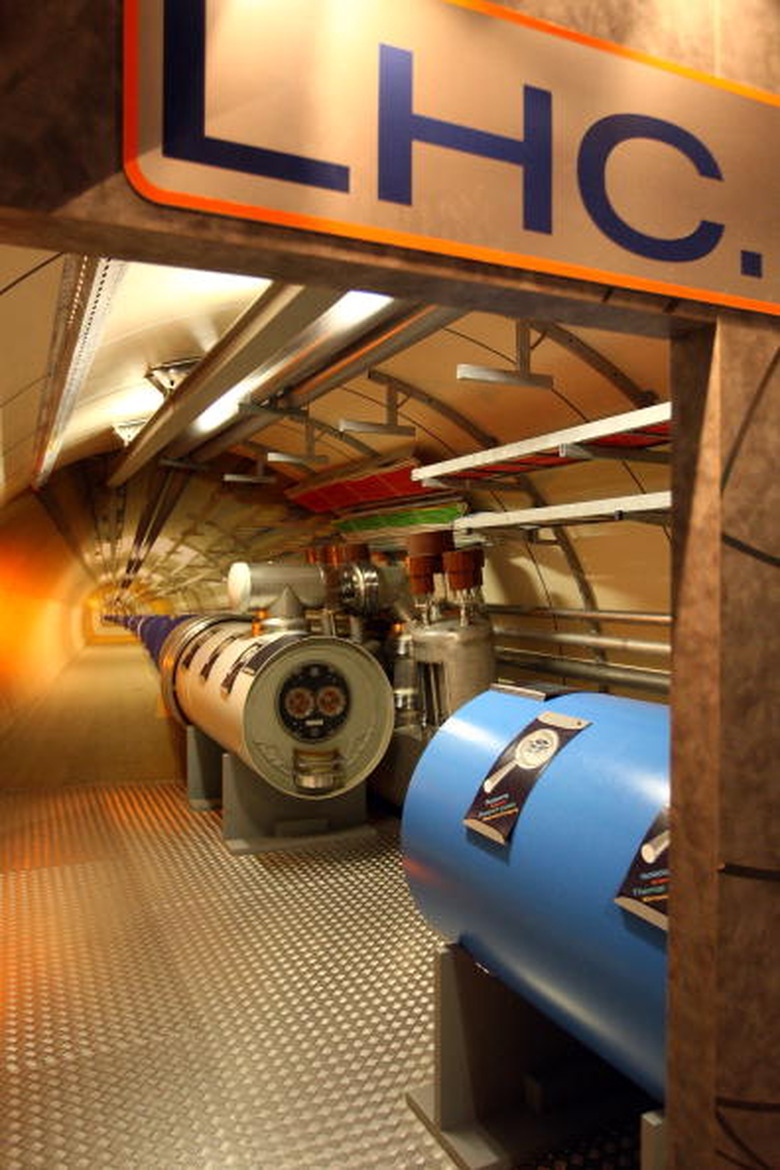Particles That Are Smaller Than An Atom
Atoms represent the smallest pieces of matter with constant properties, and are referred to as the basic unit of matter. However, scientists have discovered that atoms are not the smallest particles in nature. Despite their minuscule size, a number of much smaller particles exist, known as subatomic particles. In actuality, it is these subatomic particles that form the building blocks of our world, such as protons, neutrons, electrons and quarks, or destroy it, such as alpha and beta particles.
Protons
Protons
The proton was discovered by Earnest Rutherford in 1919. This subatomic particle is located in the nuclei of atoms. The particle's mass is equal to approximately one atomic mass and, along with the atom's neutrons, accounts for the majority of an atom's overall mass. Protons have a positive charge. The atoms of every element have a set number of protons, representing the elements atomic number.
Neutrons
Neutrons
The neutron was discovered by James Chadwick in 1932. This subatomic particle is located in the nuclei of atoms. The particle's mass is equal to approximately one atomic mass and, along with the atom's protons, accounts for the majority of the atom's overall mass. Neutrons have no electrical charge. The number of neutrons can vary for atoms of a given element, with each variation called an isotope.
Electrons
Electrons
The electron was the first subatomic particle to be identified, discovered by Sir John Joseph Thomson in 1897. Electrons orbit around an atom's nucleus in what is referred to as an electron cloud. The particle's mass is tiny, approximately 1,840 times smaller than protons and neutrons. The subatomic particle has a negative charge. Electrons are primarily responsible for chemical interactions. Electrons in the outer orbit are lost, gained or shared with other atoms, forming chemical bonds.
Alpha Particles
Alpha Particles
Alpha particles represent the nuclei of helium atoms, comprised of two protons and two neutrons. These subatomic particles are produced by radioactive alpha decay in large, unstable atoms. These particles have relatively low energy and are unable to penetrate very deeply into other materials. However, due to their size, alpha particles can be extremely destructive to human cells that they manage to come into contact with.
Beta Particles
Beta Particles
Beta particles represent free electrons or positrons. Positrons have the same mass as electrons, but posses a positive charge. Beta particles are produced by radioactive beta decay. They have relatively high energy and move at high speeds. Because of these properties, beta particles are able to penetrate materials around 100 times deeper than alpha particles.
Quarks
Quarks
Quarks represent the smallest known subatomic particles. These building blocks of matter are considered the new elementary particles, replacing protons, neutrons and electrons as the fundamental particles of the universe. There are six types, called flavors of quarks: up, down, charm, strange, top and bottom. Furthermore, quarks come in three colors, representing their force: red, blue and green. Up and down quarks are the most common and least massive. Protons are comprised of one down and two up quarks, while neutrons are comprised of one down and two up quarks.
Cite This Article
MLA
Bennett, Doug. "Particles That Are Smaller Than An Atom" sciencing.com, https://www.sciencing.com/particles-smaller-atom-8484470/. 24 April 2017.
APA
Bennett, Doug. (2017, April 24). Particles That Are Smaller Than An Atom. sciencing.com. Retrieved from https://www.sciencing.com/particles-smaller-atom-8484470/
Chicago
Bennett, Doug. Particles That Are Smaller Than An Atom last modified August 30, 2022. https://www.sciencing.com/particles-smaller-atom-8484470/
